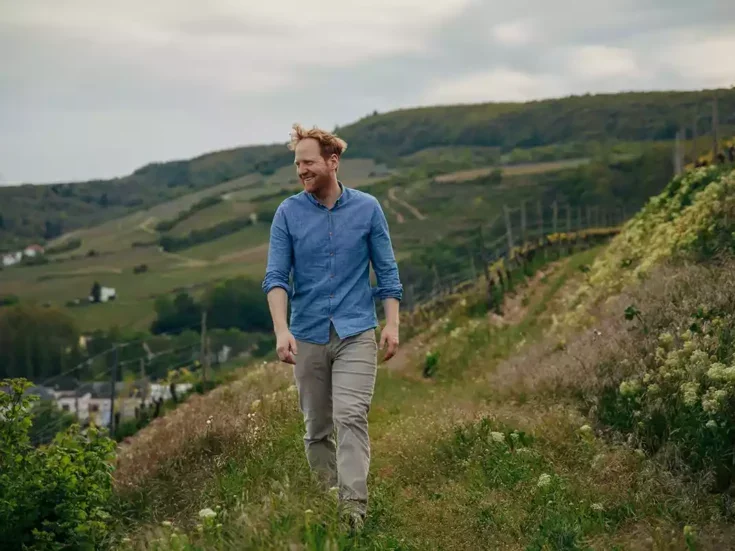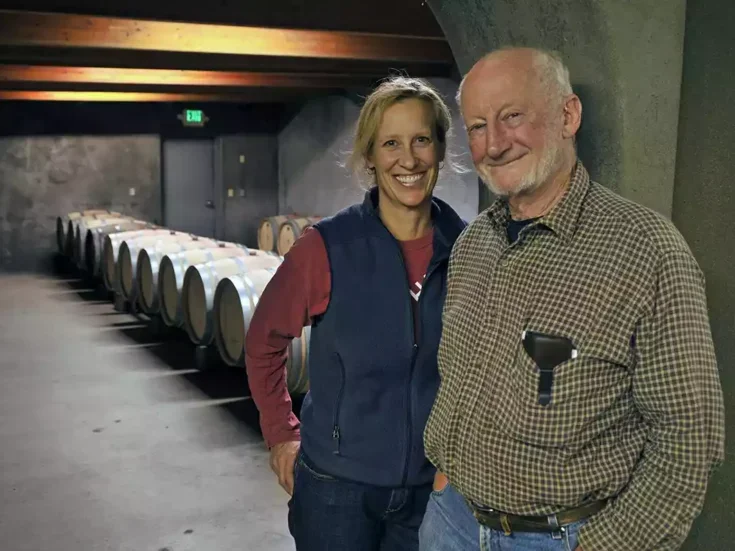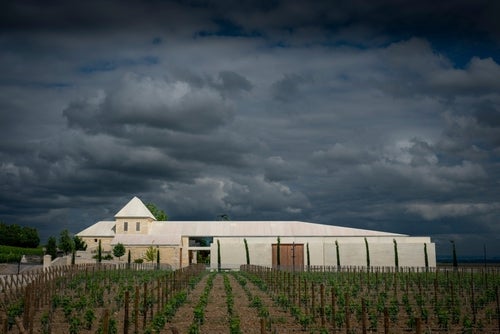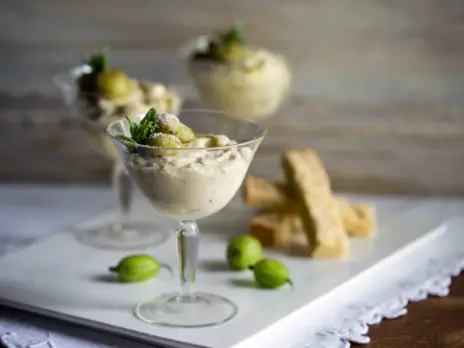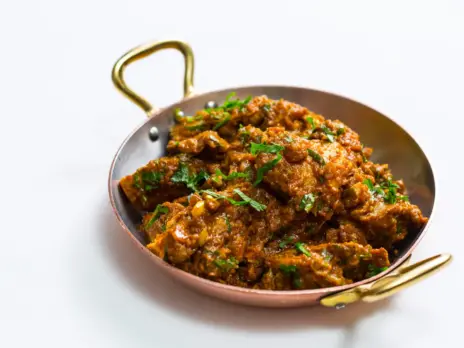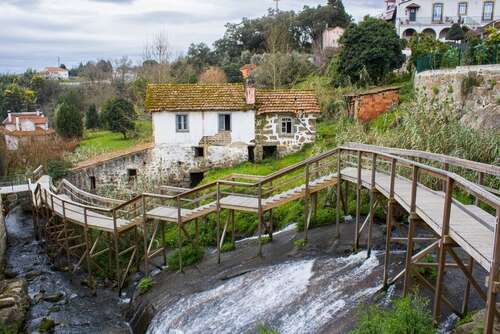
Richard Mayson introduces a positive tasting that proved the potential for dry whites made in a multiplicity of styles in Dão.
There was a time when Portugal was thought of primarily as a red-wine country. With the exception of Vinho Verde from the cool northwest of the country, Portugal’s image was shaped by Port and burly reds from the Douro, Dão, and the Alentejo. I clearly recall that when I was asked by the Portuguese wine promotion body to choose my top 50 wines in the early noughties, I opted exclusively for reds. So few whites were making the grade at the time that I opted not to show any at all for fear of making it seem like a failing.
So much has changed over the past 20 years. Alongside Vinho Verde with its world-class Alvarinho, there are enterprising producers making exciting and characterful white wines from the Minho in the north, all the way to the Algarve in the south, mostly recapturing the soul of indigenous grape varieties. One white wine that would have made the grade 20 years ago was Dão Encruzado. Long famous for its reds (and the subject of our tasting published in WFW 84, 2024, pp.206–17), Dão was one of the first Portuguese regions to show its potential for white wines, largely through a grape variety called Encruzado. This variety emerged from the traditional tangle of interplanted local varieties in the 1990s. Like so many of Portugal’s indigenous grapes, its origins are obscure. Encruzado was certainly planted in the Dão region in the 19th century—possibly under the name Salgueirinho (meaning “willow”)—but doesn’t seem to crop up anywhere else, which suggests that it is indigenous to Dão. By the turn of the 21st century, it was showing its capacity for barrel-fermented, oak-aged (and ageworthy) dry white wines, with producers like Sogrape’s Quinta das Carvalhais and Quinta dos Roques showing the way forward.
Encruzado and more
When we requested submissions for this tasting of Dão whites, I fully expected varietal Encruzado to make up a substantial part. Of the 42 wines that we received, at least 14 were pure Encruzado, including two of our top scorers from Caminhos Cruzados and Domínio de Açor. All our tasters were impressed by Encruzado, noting the Burgundian qualities in these predominantly oak-aged wines. Simon Field expressed his “new-found love of Encruzado,” and Andrew Jefford summed it up well when he stated that “Encruzado is clearly a variety with exciting potential; its acidity means that it is often mouthwatering, yet its natural structure and generosity means that it is mouth-filling, too—a rare combination.” No wonder that Dão Encruzado already has a head start as one of Portugal’s leading dry white wines.
But like most of Portugal’s wine regions, there is far more to Dão than a single grape variety. The traditional smallholdings that make up the region were planted with a huge number of different grapes, both red and white. Interplanting favored the production of clarete—lighter reds made from an 80/20 blend of red and white grapes that helped to temper the naturally high tannins. Around 80% of the total production in Dão continues to be red, but white wines have been on an upward trend. The local viticultural commission lists a total of 22 permitted white grapes (compared to 20 reds), mostly indigenous, with the notable exception of Semillon. Whites were traditionally produced in the cooler western part of the region around the towns of Mortágua and Santa Comba Dão, where the Atlantic influence is greatest. It is here, near the famous Palace Hotel at Buçaco, with its own idiosyncratic Bussaco red and white wines, that Dão borders Bairrada, and both regions share some of the same grapes. Bical and Maria Gomes are both respected Bairrada grapes that have migrated across the border and are planted alongside other varieties such as Malvasia Fina, Cercial (sometimes spelled Cerceal), Rabo de Ovelha, Gouveio, and Arinto to make up the traditional Dão blend. The valleys are broader in the west, the soils deeper, and the wines less influenced by the hard granite that forms the jagged countryside in the heart of the region and to the east. We had just one varietal wine from Bical, which didn’t quite do justice to this, the leading white grape in the Bairrada region. Barcelo, another Dão grape capable of quality, didn’t feature as a varietal in this tasting but almost certainly featured in some of the blends.
Ageworthy and impressive
Thankfully, the viticultural diversity that was once something of an unknown has not been lost. Old mixed vineyards have been reevaluated and restored in recent years, and there has been a move to planting white grapes at higher altitudes (2,000–2,300ft [600–700m]) along the foot-slopes of the Serra da Estela, Portugal’s highest mountain range. As we concluded in our previous tasting, the granite soils shaped most of the reds that, in the words of Simon Field, “unveiled stark, statuesque wines,” with tough, unyielding tannins that can be challenging in younger wines. In this tasting, Andrew Jefford observed that the whites “have a similar starkness of profile,” with “pronounced acidity” but with the added “sensual allure that has no ready equivalent among the reds.” Simon Field’s comments reflected this, highlighting “the stone-fruit minerality and herbal, almost resinous, precision.” We all agreed that Encruzado and its peers took well to oak, but I marked down the more overtly oaky wines where I thought that woody oxidation overtook the fruit. Andrew Jefford, however, felt that Dão white wines can “flaunt their oakiness without this coming to be seen as a liability, just as white Rioja can.”
As proof of the ageworthiness of well-made white Dão, four of the wines scoring an average of 90 points or more were from vintages in the middle of the past decade. We all remarked on their mellow, buttery sophistication, balanced by a streak of apple and citrus acidity. These three wines were either pure Encruzado or blends with Encruzado at their core, backed by Malvasia Fina and Cerceal. Osvaldo Amado, the owner and winemaker of Raríssimo, only releases his white wines when they are at least five years old, and half of his current multi-vintage blend (which scored 91 points) comes from 2011. Another high-scoring multi-vintage blend that was characteristically “mellow […], creamy, and beguiling,” was Quinta dos Carvalhais Branco Especial from Sogrape, based on Encruzado, with Gouveio and Semillon, bottled in 2021. The wines making up this blend had previously been aged for between seven and ten years in oak.
Some of these wines are undeniably expensive; wines with names like Rarissimo don’t come cheap—nor should they. But there is real value to be had from white Dão, with high-scoring, well-priced wines from Caminhos Cruzados and Carlos Lucas, with Cabriz, Quinta do Perdigão, Pereira do Melo, Taboadella, Pedra Cancela, Dom Daganel, UDACA, and Porta dos Cavaleiros offering value a little further down the average points scale. All these wines scored at least 90 points from one or more of our tasters, though there was some variation of opinion that leveled out the average score. It is very good to see a cooperative (Silgueiros), as well as two longstanding producers (UDACA and Caves São João), among these higher-scoring wines. It has to be said that many of the wines in this tasting elicited a variety of sentiments from our tasters, with a divergence in scores of ten points or more among some of the wines. For all their undoubted character and individuality, Dão whites do clearly divide opinion.
Overall, it is fair to say that we were very positive about this tasting. Andrew Jefford concluded that this was “an excellent tasting” that he enjoyed more than the tasting of Dão reds. Simon Field judged it to be “an impressive tasting overall,” finding that the best wines were those that were “relatively unadorned, pure, and to be lauded for their unabashed individuality.” Given the fairly recent history of the Dão region (see my introduction to the tasting in WFW 84), there is much to be admired in the way that individual producers have rediscovered their terroir from the standardization but viticultural anarchy that they inherited just over 30 years ago. There is certainly further to go, but this tasting clearly substantiates the fact that Dão is a relatively small region with a unique terroir delivering red and white wines with distinctive profiles yet also with considerable variability in character and style.
Simon Field MW’s verdict
The recent World of Fine Wine tasting of Dão reds unveiled stark, statuesque wines, fed by a beguiling combination of granite and ripeness; challenging, therefore, in terms of tannic expression in youth and a potentially ungainly pas de deux in the passage to maturity. I was intrigued to find out how the whites might fare against such a backdrop, and also to see whether I, once again, was to prove the most generous of the three tasters in terms of score. Indeed, I was—whether as a result of inherent generosity of temperament or because of a newly found love of the Encruzado variety, it is hard to say.
An impressive tasting overall, for these varietal wines (albeit sometimes webbed within a field blend); dominant, its driving acidity dictating structure and shape, but in no way overshadowing an inherent appeal, focused for me on stone-fruit minerality and an herbal and almost resinous precision. I was less enamored of the more overtly oaky wines, sensing nothing of the step up in complexity that one may encounter with Rioja, say; and the wines where there was evidence of lees-stirring lacked Burgundian finesse on the one hand and structural integrity on the other. The best wines, therefore, were relatively unadorned, pure, and to be lauded for their unabashed individuality.
My highest scores covered old and young alike (the Osvaldo Amado Rarissimo pair especially impressive in the former category) and tended to favor wines with plenty of dry extract to tame the rigorous acidity and those with an herb/fruit/flint-stone profile, which, while self-evidently a long way from Chablis, did not lack upstanding charm and a distinct, proud identity.
Andrew Jefford’s verdict
This was an excellent tasting, and I greatly enjoyed it—more, indeed, than the red Dão tasting we did some months earlier. Dão’s terroir seems to deliver wines with intrinsically dramatic profiles, notably ample acidity even when fully ripe, and with significant polyphenolic potential. This makes tasting the reds a challenge—the wines can often seem tough, incisive, and intractable, particularly when tasted on their own. The whites have a similar starkness of profile, notably from pronounced acidity, but there are no tannin problems to overcome, and they can also display a sensual allure that has no ready equivalent among the reds. Encruzado is clearly a variety with exciting potential; its acidity means that it is often mouthwatering, yet its natural structure and generosity mean that it is mouth-filling, too—a rare combination. I was also impressed with the ability of Encruzado and the other local varieties to evoke an almost startling variety of allusions, from resin, undergrowth, and forest notes, all the way through floral notes, honey, and almond, to the lushest of tropical fruits. The variety and its peers take well to oak. If the “grand classics” of the white Rioja tradition have a Portuguese echo, it is surely in Dão whites, which, with age, swiftly acquire statuesque proportions and are able to flaunt their “oakiness” without this coming to be seen as a liability, just as white Rioja can. The combination of mouthwatering and mouth-filling makes these wines adept table partners, too, pairing well (I would imagine) with a wide range of foods. Finally, if you are interested in hunting down “minerality,” this is a good place to look. While rarely saline, many of them seem to convey a sense of stoniness behind their more prominent allusive profiles.

